Cantabria has it all. Don't hesitate, plan your trip to enjoy all the wonders this region has to offer. Experience a mild summer away from the extreme heat. You won't want to leave.
Galicia, more than a destination
Discover Galicia, the secret corner of Spain where the magic of the green landscapes mixes with the rich cultural tradition. This land has everything to captivate your senses and leave you wanting more.
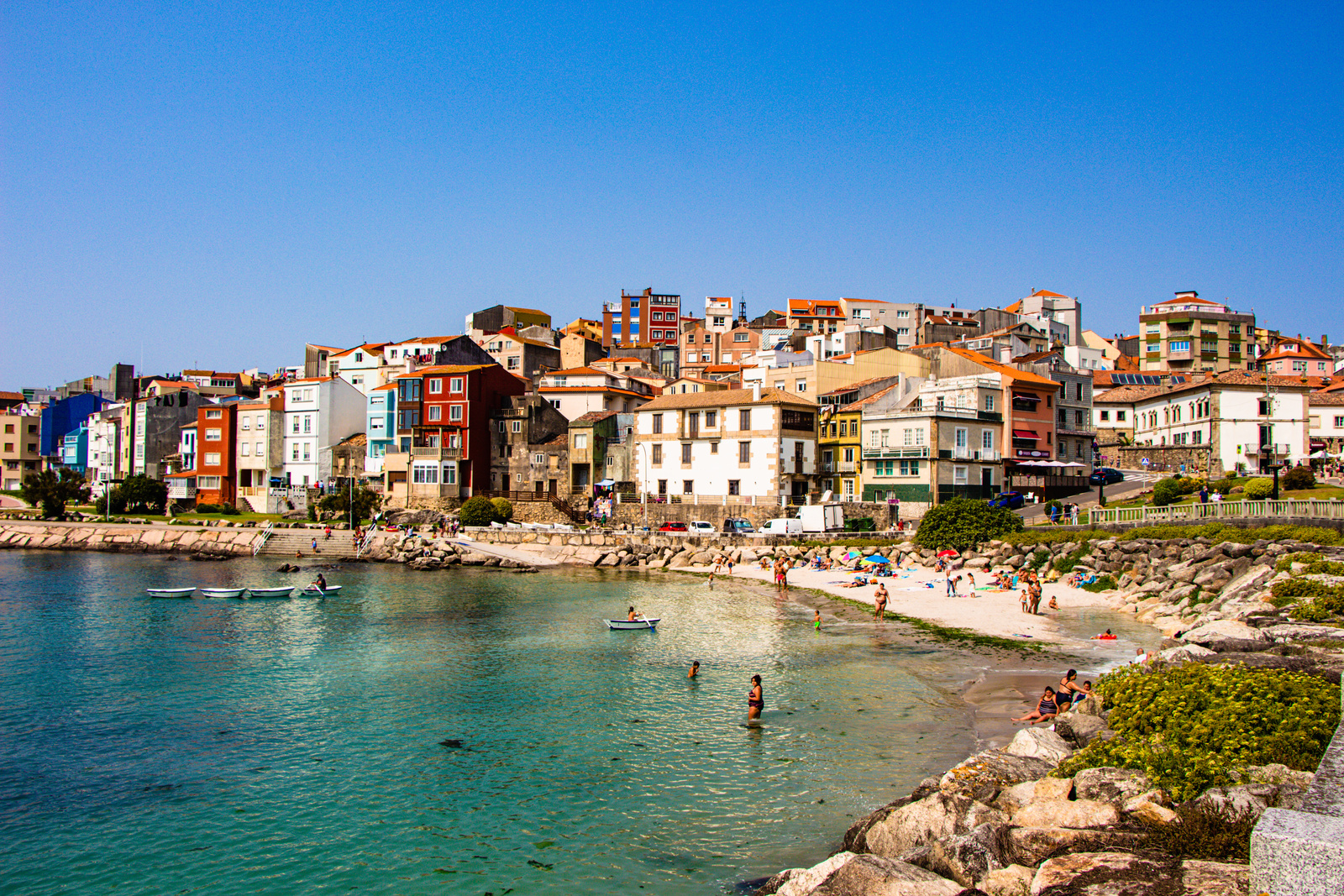
In the northwest corner of the Iberian Peninsula, bathed by the Atlantic and embraced by green mountains, lies a magical land, Galicia. It is a destination that captivates with its unique charm and rich history.
From the medieval walls of Santiago de Compostela to the white sandy beaches of the Rias Baixas, every corner of Galicia tells a fascinating story. Pilgrims travel through centuries of history on the Camino de Santiago, while nature lovers lose themselves in the timeless beauty of the Cíes Islands.
Immerse yourself in its essence as you explore its charming stone villages, taste fresh seafood and let yourself be seduced by the echo of bagpipes on starry nights. Here, every moment is an invitation to discover a new treasure.
We propose a dream vacation and disconnection in Galicia. Discover why it is much more than a destination: it is a place where dreams come true.
A trip to the past
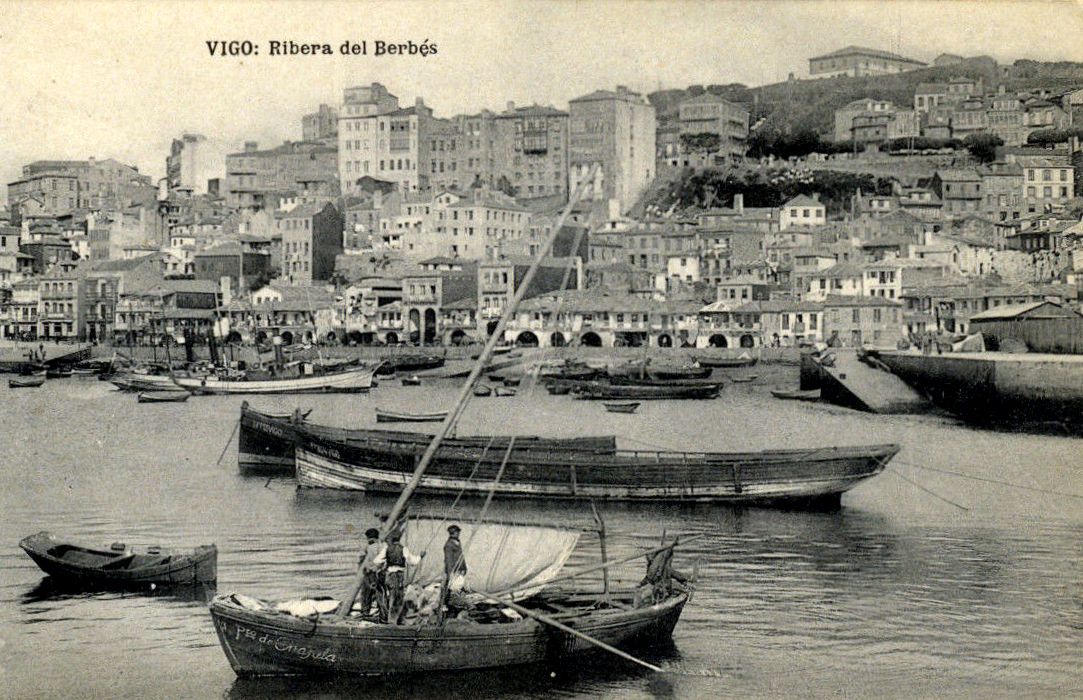
Galicia, land of mysteries and legends, invites travelers to embark on a fascinating journey into the past. With its ancient Celtic forts, majestic medieval fortresses and charming stone villages, this region is a true treasure trove for those seeking to immerse themselves in history and culture.
From ancient times to the present day, this region of northwestern Spain has witnessed numerous events that have left an indelible mark on its culture.
The first known inhabitants were the Celts, who settled in the region around the first millennium BC. They built fortified settlements known as “castros”, many of which can still be seen today, such as Castro de Baroña and Castro de Santa Trega. The Celts left a profound influence on Galician culture, which is reflected in the music, gastronomy and local traditions.

It was conquered by the Roman Empire in the 1st century BC. During this period, numerous infrastructures were built, such as the Tower of Hercules in A Coruña, the oldest functioning Roman lighthouse in the world.
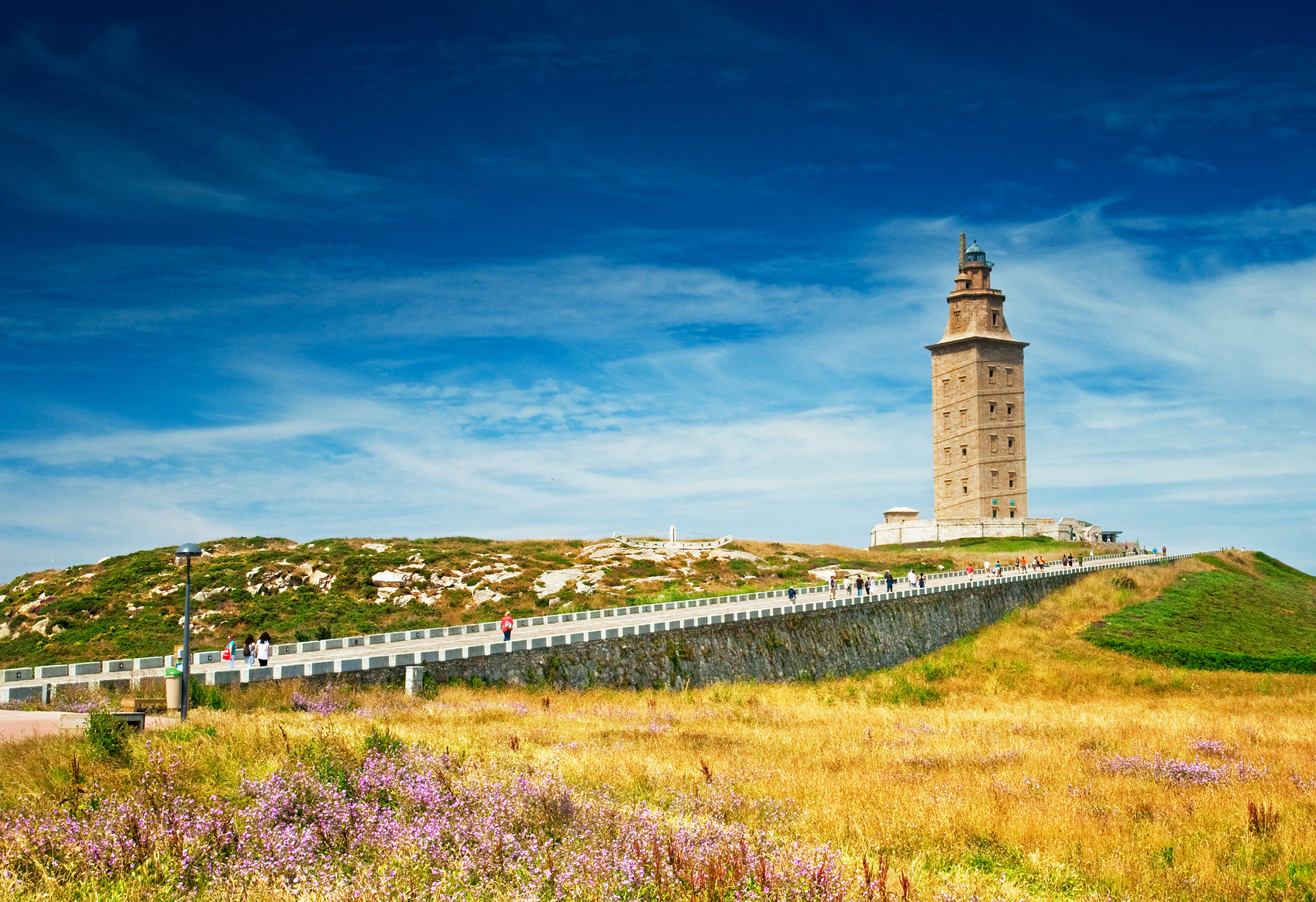
In the Middle Ages, Galicia became an important religious center thanks to the discovery of the remains of the apostle St. James in the 9th century, which led to the creation of the Camino de Santiago and the development of the city of Santiago de Compostela.
In the 20th century, Galicia underwent a profound economic and social transformation, with industrialization and the development of tourism as key drivers of its economy. Today, Galicia is known for its stunning natural beauty, rich gastronomy and unique cultural heritage.

Mandatory stops
Santiago de Compostela, the capital of Galicia and one of the most important destinations for pilgrims from all over the world. The majestic Cathedral of Santiago and the old town full of history make this city a must-see.
With its iconic Roman lighthouse, the Tower of Hercules, and its extensive urban beaches, A Coruña is a must for history and beach lovers.
The Rías Baixas is dotted with charming coastal towns, such as Baiona, with its historic castle; Cambados, famous for its albariño wines; and Combarro, with its horreos by the sea.
The Cíes Islands are considered by many as the most beautiful Galician islands. This archipelago is a natural paradise with white sandy beaches and crystal clear waters, the perfect place for hiking, diving or just relaxing.
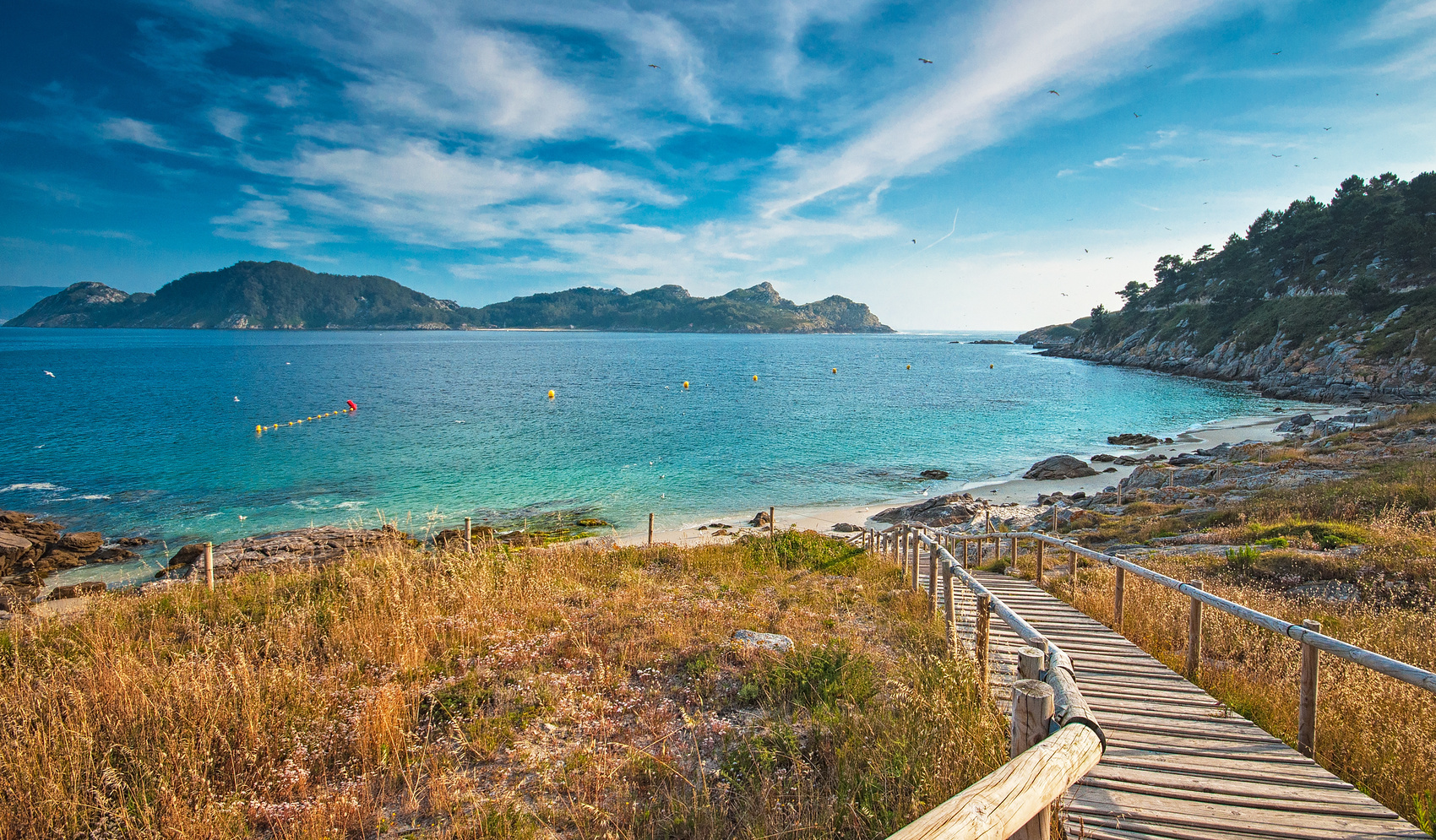
Ribeira Sacra: This wine region in the interior of Galicia is known for its impressive river canyons and terraced vineyards. A cruise on the Sil or Miño rivers is an excellent way to explore this unique landscape.
Lugo: This city is famous for its perfectly preserved Roman walls, which surround the old town and offer panoramic views of the city. In addition, its cathedral and cobblestone streets are a pleasure to stroll through.
Costa da Morte: This rugged and wild coastline is known for its impressive cliffs and lonely lighthouses. It is an ideal place for hiking and nature lovers, with routes offering spectacular views of the Atlantic.
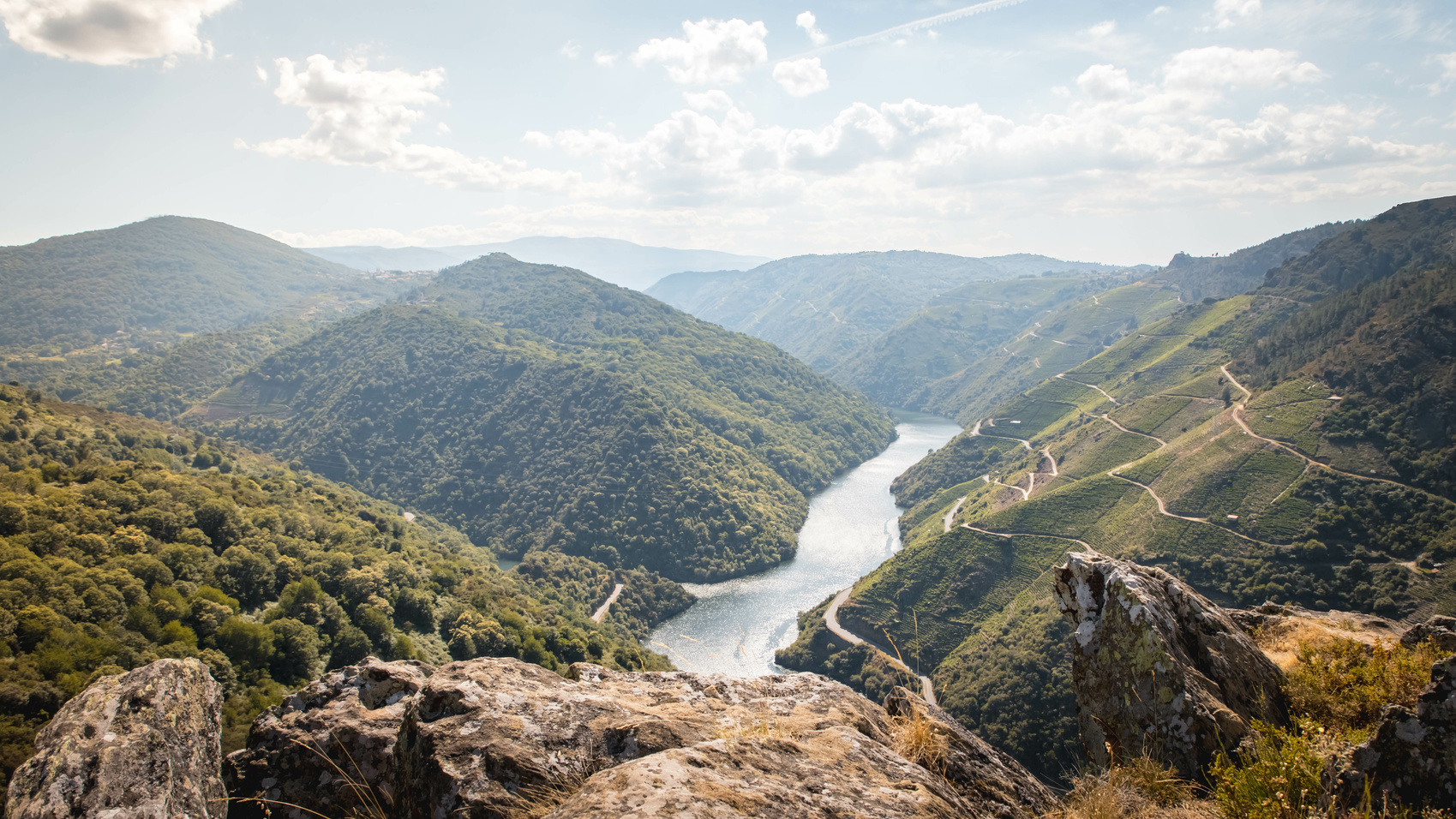

Where villages come alive
Galicia is home to a collection of charming villages that seem to have stood still in time, preserving their traditional charm and offering an authentic glimpse of Galician rural life. We invite you on a journey through these villages.
Combarro: Treasure trove of granaries and Galician charm

Known for its picturesque rows of horreos by the sea, it is a fishing village with a unique charm. Its narrow cobbled streets and stone houses will take you back in time.
Allariz: Medieval treasure on the banks of the Arnoia River
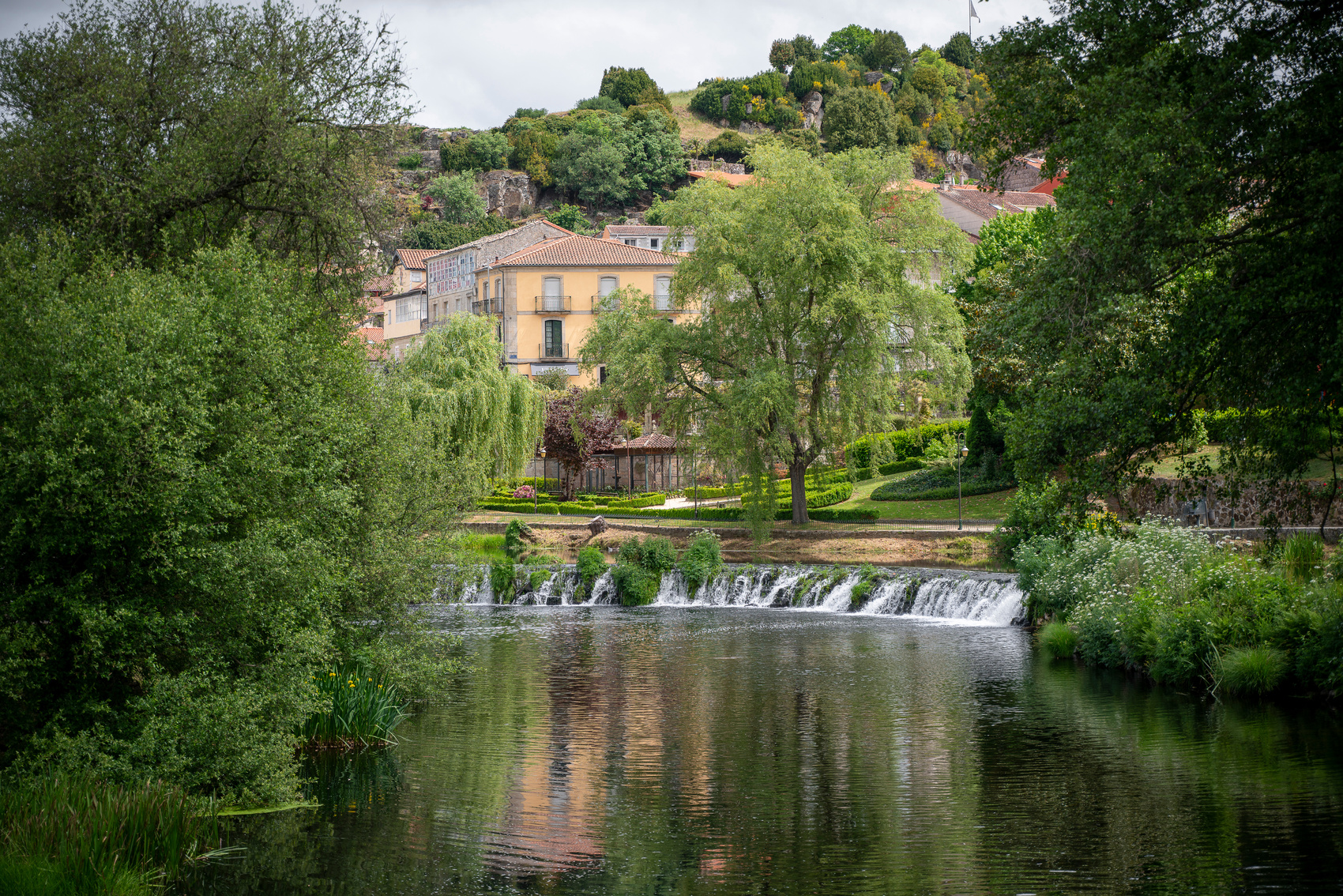
Betanzos: Between Walls and Galician Legends
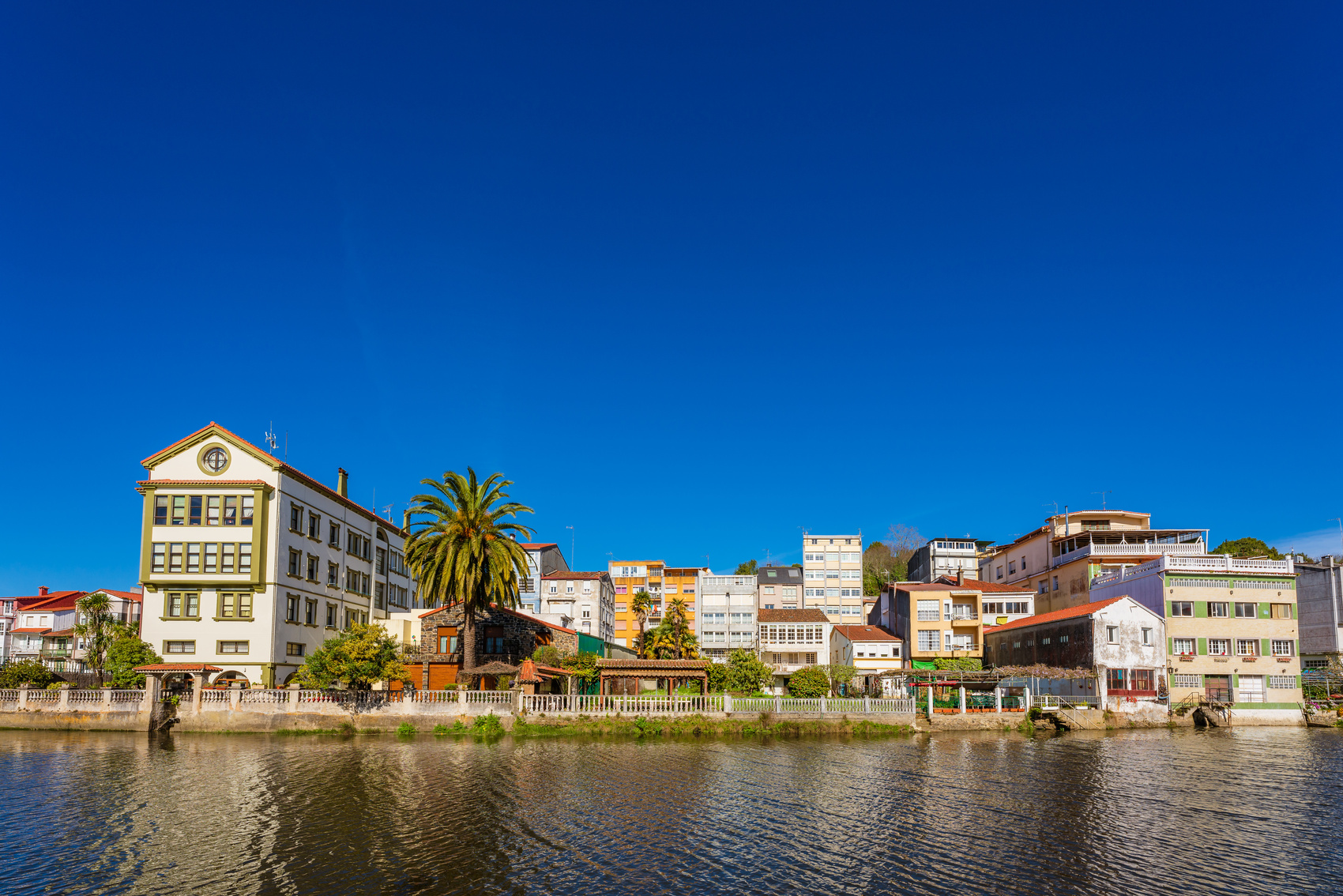
This picturesque medieval town, located in the province of A Coruña, is surrounded by walls and preserves a well-preserved historic center. Its quiet squares and cobblestone streets are a pleasure to explore.
Muros: Fishing village in the Rías Baixas

Located on the coast of the Rias Baixas, Muros is a charming fishing village with a beautiful harbor and a lively main square. Its white houses and narrow streets full of life will make you feel as if you have stepped back in time.
Ribadavia: Between lands of wine and tradition

Located in the wine region of O Ribeiro, Ribadavia is famous for its well-preserved old town and its rich Jewish heritage. Its cobbled streets and medieval castle bear witness to its historical past.
Luarca: Seaside beauty between cliffs and lighthouses
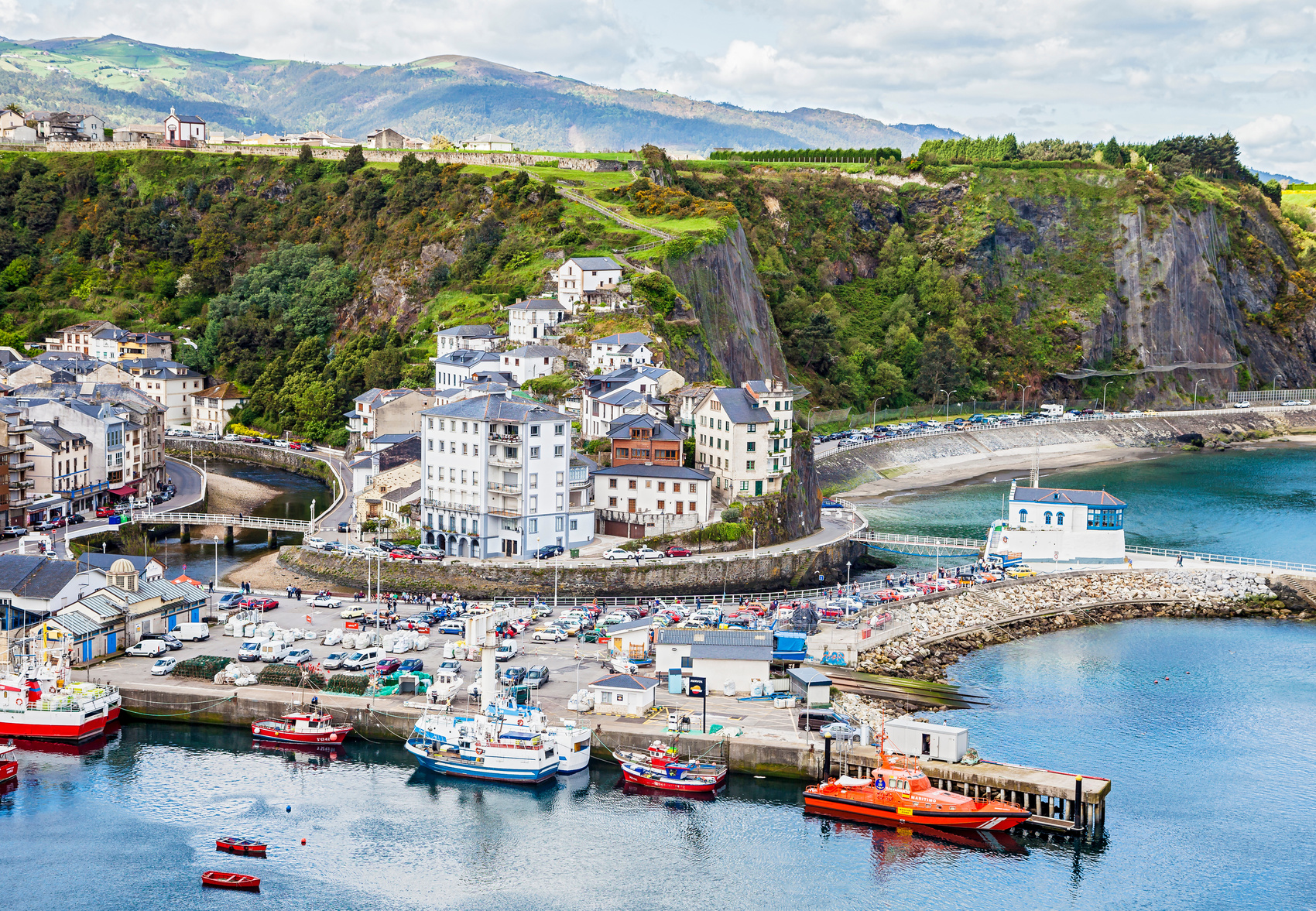
Although technically located in Asturias, this charming coastal town is so close to the Galician border that it deserves to be mentioned. With its picturesque harbor, colorful houses and emblematic lighthouse, Luarca is a magical place to get lost.
O Grove: Seafood and Nature in the Rías Baixas
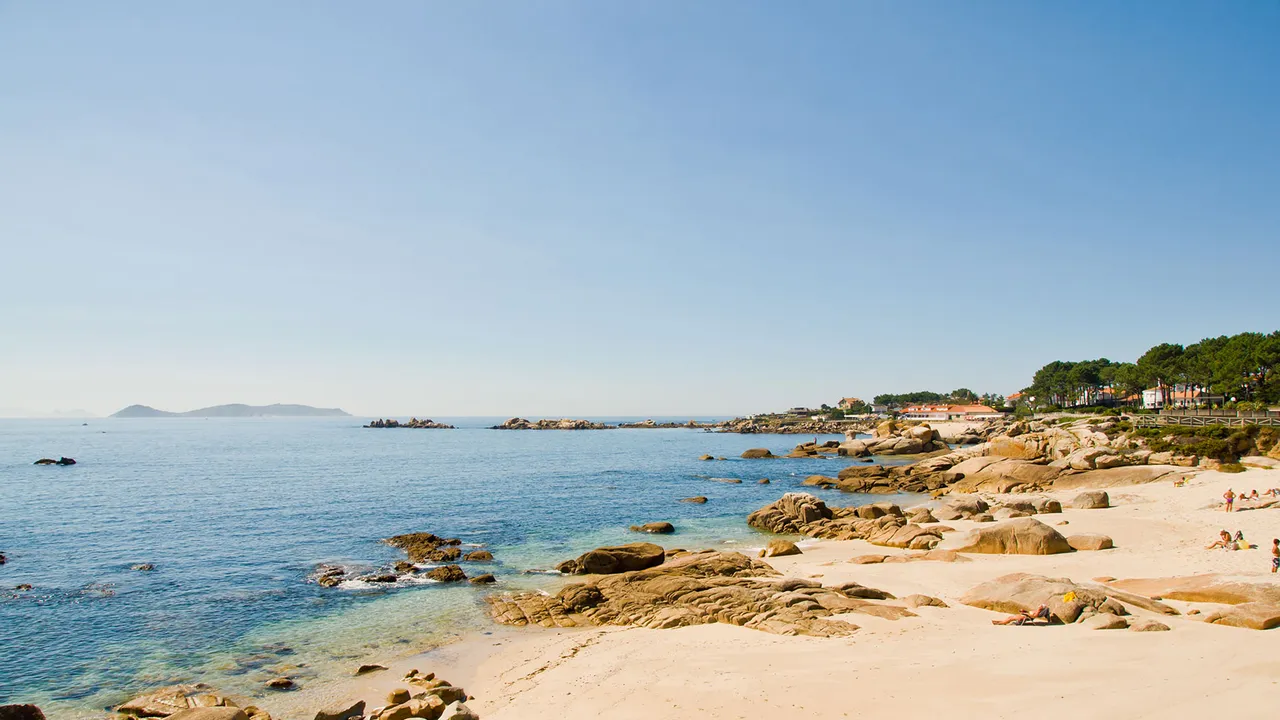
In Pontevedra is famous for its fresh seafood and delicious gastronomy. It has several white sandy beaches and crystal clear waters that are perfect for sunbathing, swimming and water sports such as surfing and windsurfing. Lanzada beach and Mexilloeira beach are two of the most popular.
Noia: Fishing Charm and Heritage in the Ria de Muros and Noia

With a strong link to fishing and a rich historical heritage. Known for its beautiful old town and seafaring atmosphere, Noia offers visitors the opportunity to immerse themselves in authentic Galician life while exploring its cobblestone streets.
A Guarda: Seafaring Charm on the Galician Coast
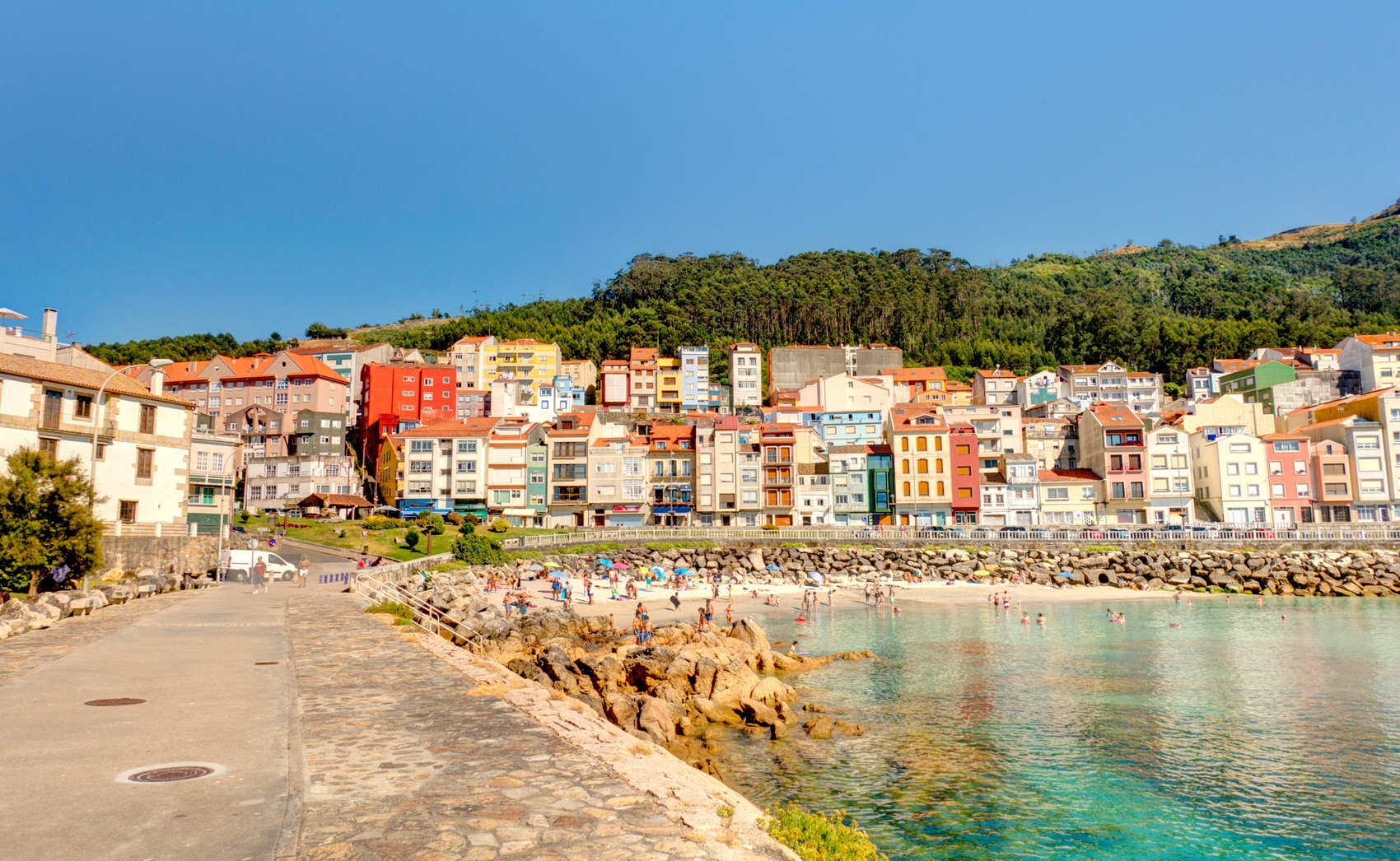
Seafaring town that captivates with its authentic atmosphere and stunning coastal scenery. With its active port, its delicious seafood cuisine and its rich cultural heritage.
Ares: Coastal beauty on the Galician estuary
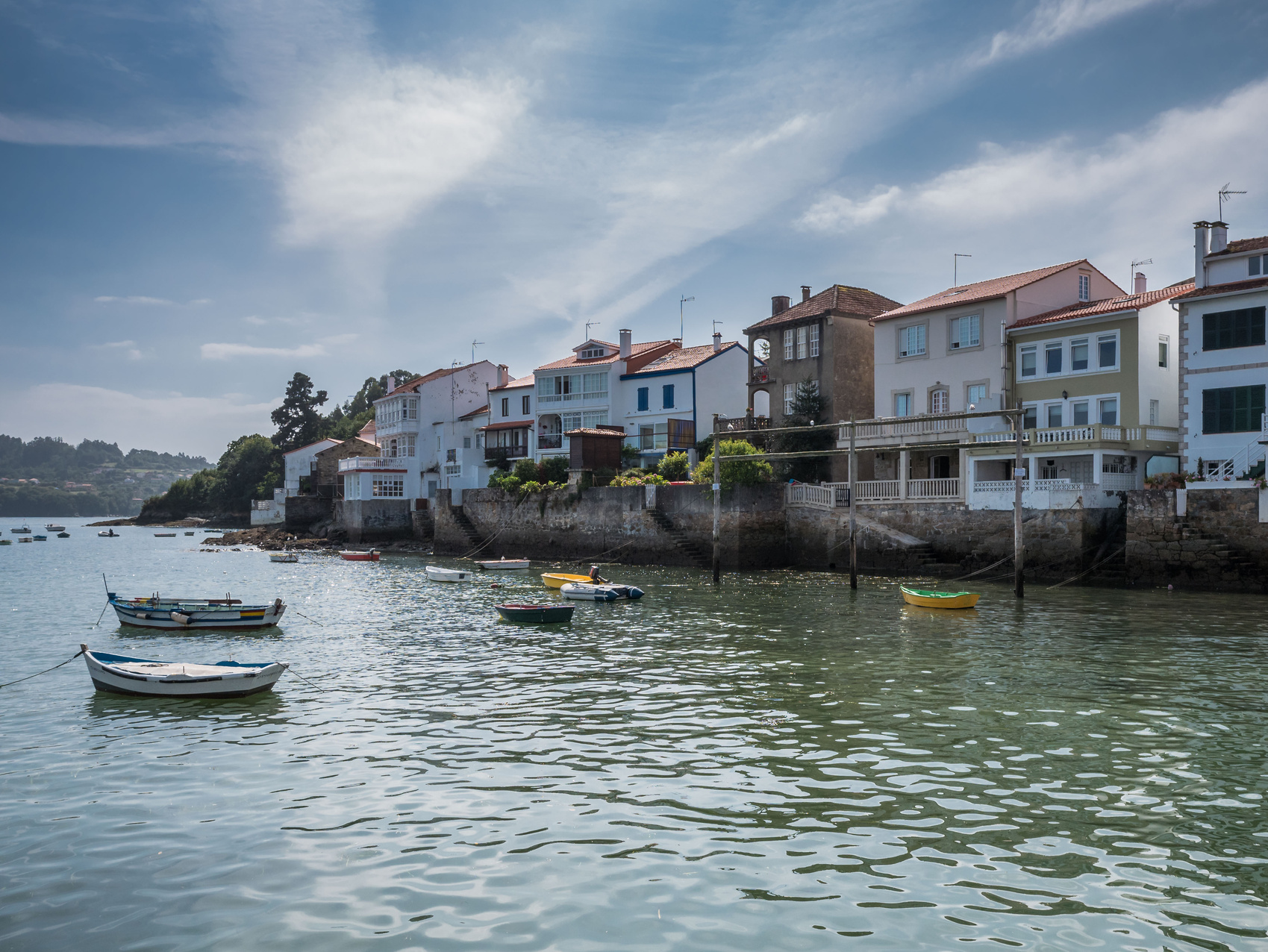
It dazzles with its breathtaking coastal beauty. With golden beaches, panoramic views and a seafaring charm, Ares offers visitors the opportunity to enjoy the serenity of the sea and explore the unspoiled nature of the region while immersing themselves in Galician coastal life.
Baiona: Stories of the sea and fortresses on the Galician Coast
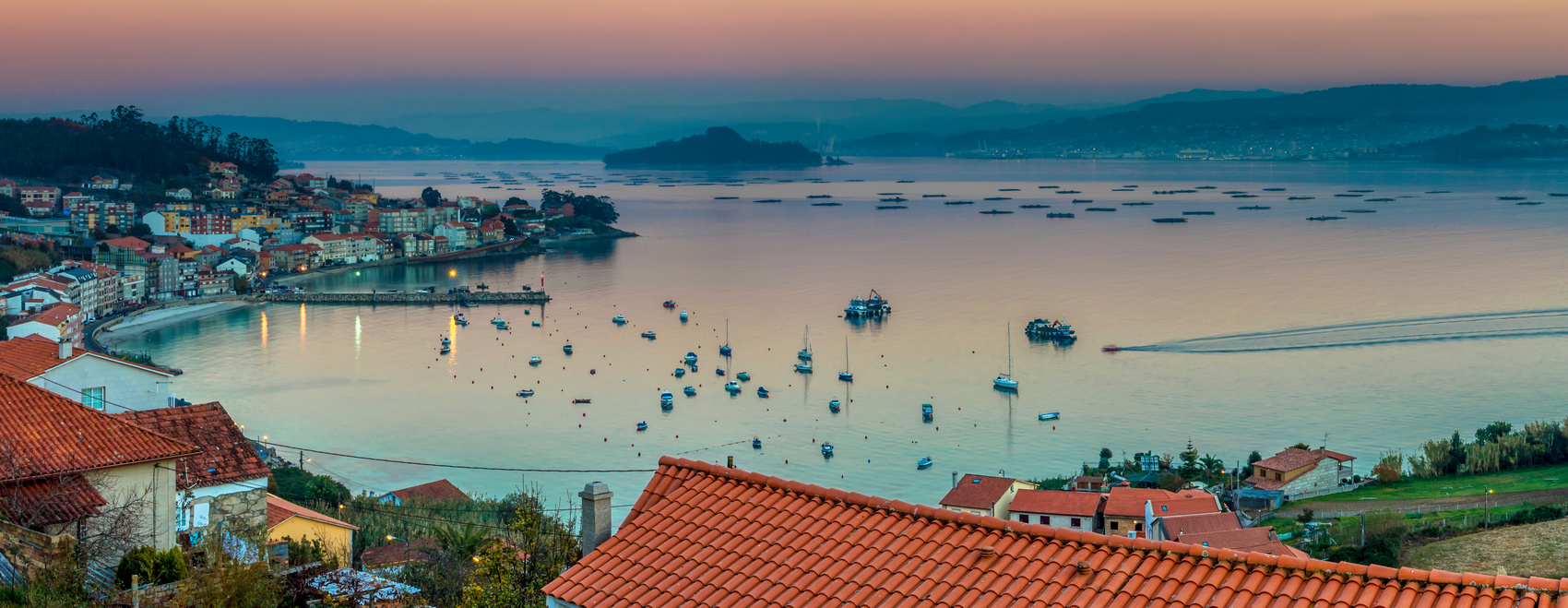
Steeped in maritime history and protected by majestic fortresses. Its charming cobblestone streets, bustling port and imposing fortress invite visitors to immerse themselves in the past while enjoying sea views and exploring the region’s rich cultural heritage.
O Barco de Valdeorras: Gateway to the Ribeiro Vineyards
Serves as the gateway to the Ribeiro vineyards. Discover the region’s rich winemaking heritage while exploring its historic streets and enjoying the local hospitality.

These are just a few examples of the many charming villages you will find in Galicia. Each has its own unique history and beauty to explore, making a trip to this region an unforgettable experience.
Gastronomy
Galician gastronomy is a unique experience that combines fresh ingredients, culinary tradition and a passion for quality cuisine.
Seafood: Galicia is known for its wide variety of fresh seafood, including octopus, barnacles, mussels, clams, razor clams and spider crab. Atlantic fish, such as hake, sea bass, turbot and cod, are also fundamental ingredients in Galician cuisine.
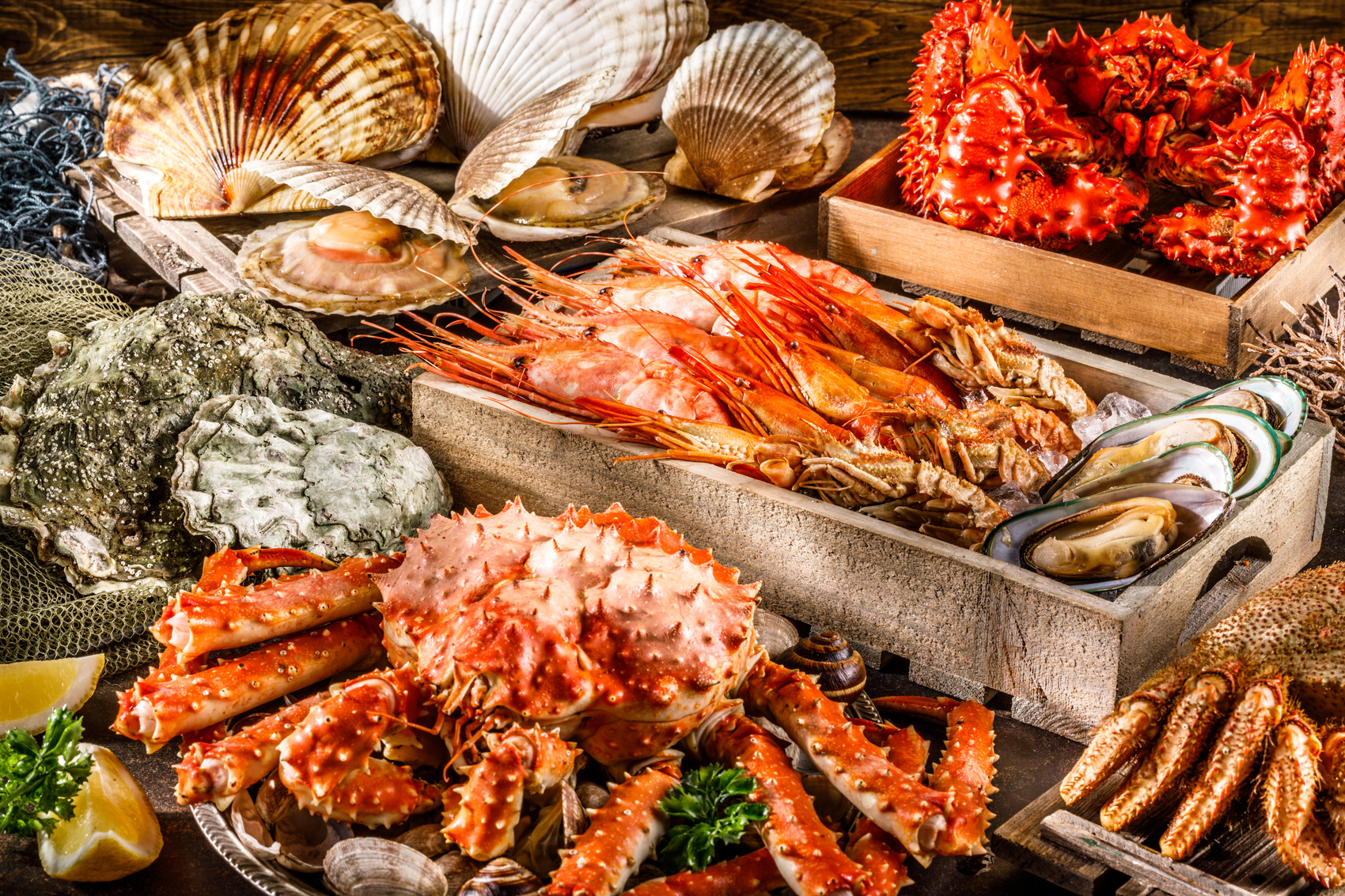
Pulpo á feira: This emblematic dish consists of cooked octopus cut into slices, served with olive oil, salt and paprika. It is usually accompanied by boiled potatoes and is a staple at Galician parties and festivals.
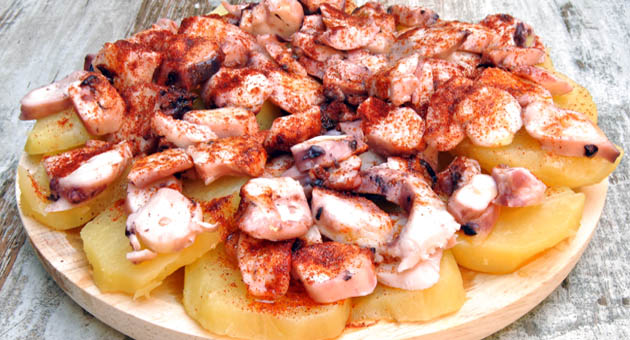
Empanadas: Galician empanadas are pastries filled with a variety of ingredients, such as tuna, meat, cod or vegetables, all wrapped in a thin layer of dough and baked.

Cocido gallego: This traditional dish is a stew made with pork, chorizo sausage, pork shoulder, turnip greens, potatoes and chickpeas. It is served in several stages, starting with the soup and then the solid ingredients.
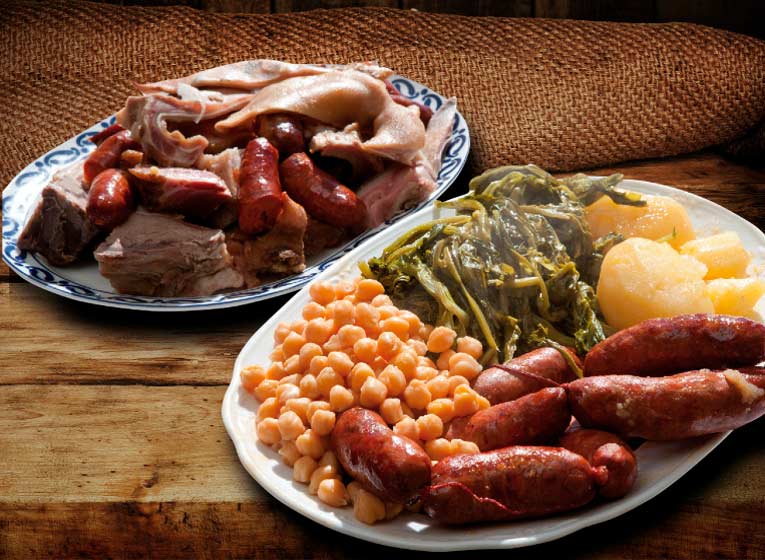
Tarta de Santiago: This traditional dessert is an almond cake made with ground almonds, sugar, eggs and lemon zest. It is covered with powdered sugar and decorated with the cross of Santiago. It is a delicious dessert and very popular throughout Spain.
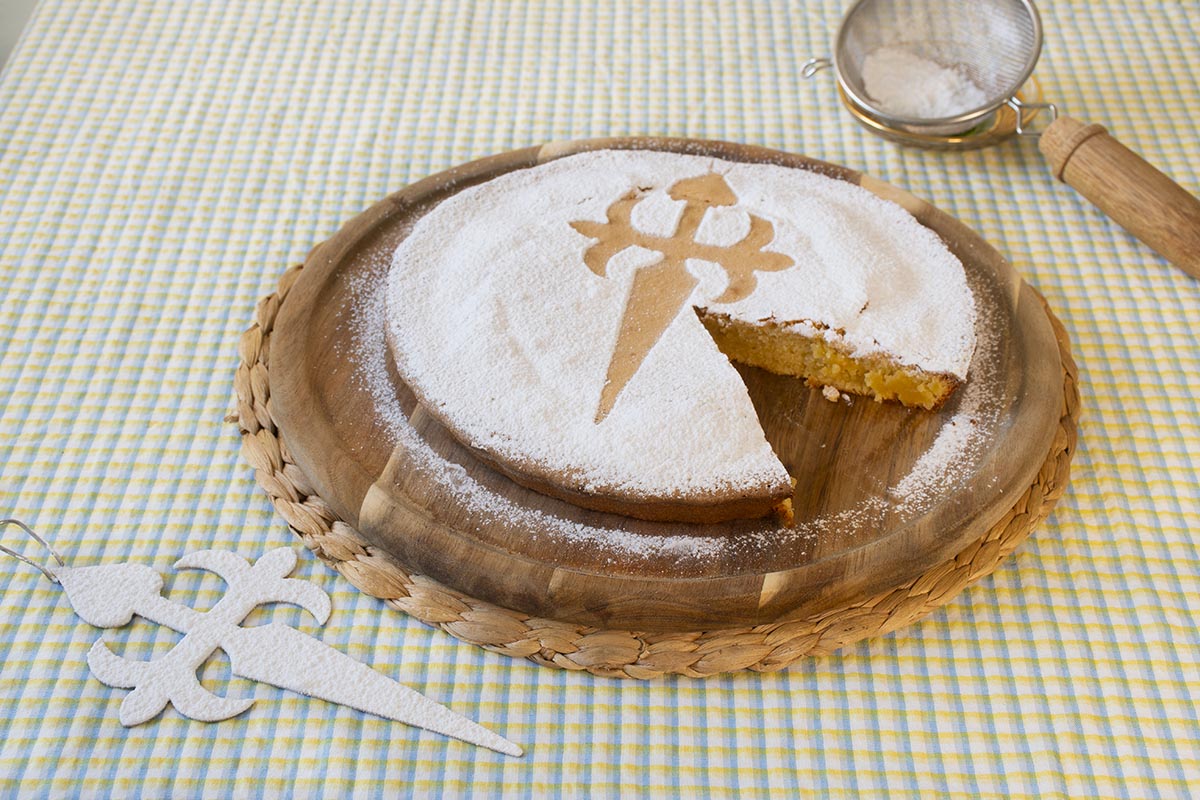
Cheeses: Galicia produces a variety of delicious cheeses, such as tetilla cheese, San Simón cheese and Arzúa-Ulloa cheese. These cheeses are perfect to enjoy as an appetizer or as part of a cheese board with quince jelly or honey.
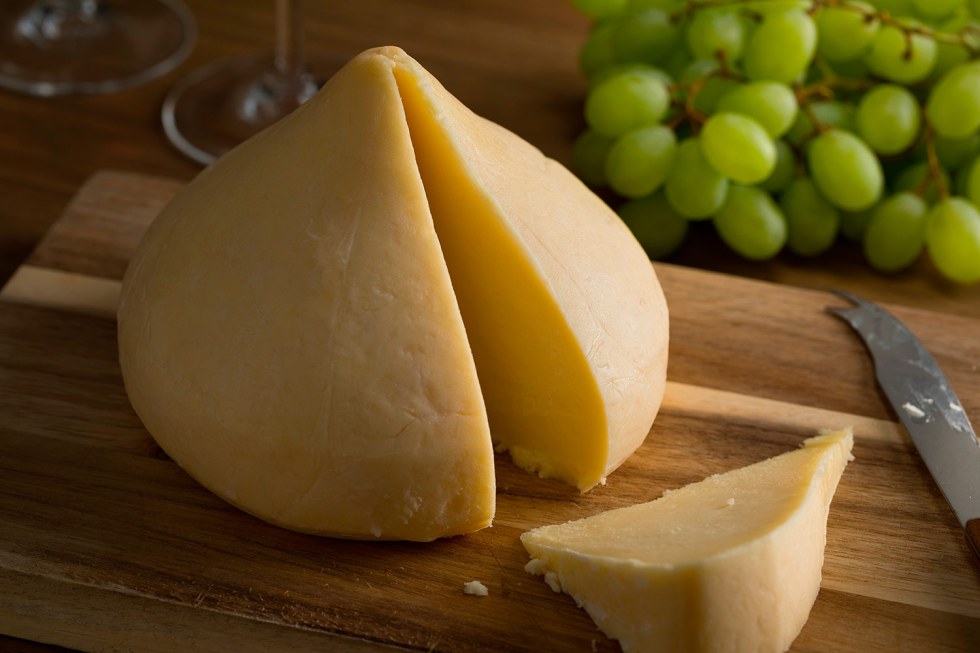
Wines: Galicia is known for its high quality wines, especially white wines made from varieties such as Albariño, Godello and Treixadura. The Denominations of Origin Rías Baixas, Ribeiro, Valdeorras and Monterrei produce some of the best white wines in the region.
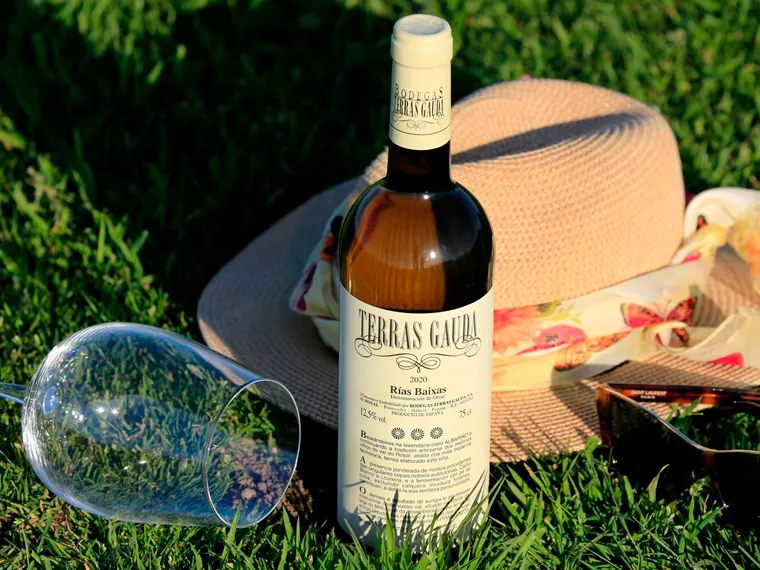
Galician gastronomy stands out for its quality, freshness and unique flavor. Galician cuisine is a celebration of local produce and culinary tradition, and offers an unforgettable dining experience for all who try it.
Where to eat
From local restaurants offering authentic Galician cuisine, with traditional dishes prepared with fresh ingredients from the region.
Seafood restaurants and tapas bars ideal for sampling fresh seafood such as octopus, clams and barnacles. Visit local markets and fish markets for fresh, high quality products. Some markets also have food stalls where you can sample authentic, homemade dishes.
Mesones and taverns are cozy places where you can enjoy traditional dishes in an informal atmosphere. Here you can try cocido gallego (Galician stew), caldo gallego (Galician broth) and other regional delicacies.
If you like meat, visit a Galician steakhouse or churrascaria, where you can enjoy juicy grilled meats such as churrasco, pork ribs and roast lamb.
Explore Galicia’s wineries and vineyards, where you can taste local wines, learn about the winemaking process and enjoy wine and food pairings.
Galicia has several Michelin-starred restaurants, where you can enjoy an exceptional gastronomic experience and savor innovative dishes prepared by internationally renowned chefs.
Casa Marcelo: In Santiago de Compostela. It offers an innovative gastronomic experience with tasting menus that combine modern techniques with local products.

O Dezaseis: Located in the heart of the old town of Santiago de Compostela. It stands out for its contemporary Galician cuisine and cozy atmosphere.
Visit Alborada in A Coruña, a Michelin-starred restaurant offering creative dishes made with fresh, seasonal ingredients.
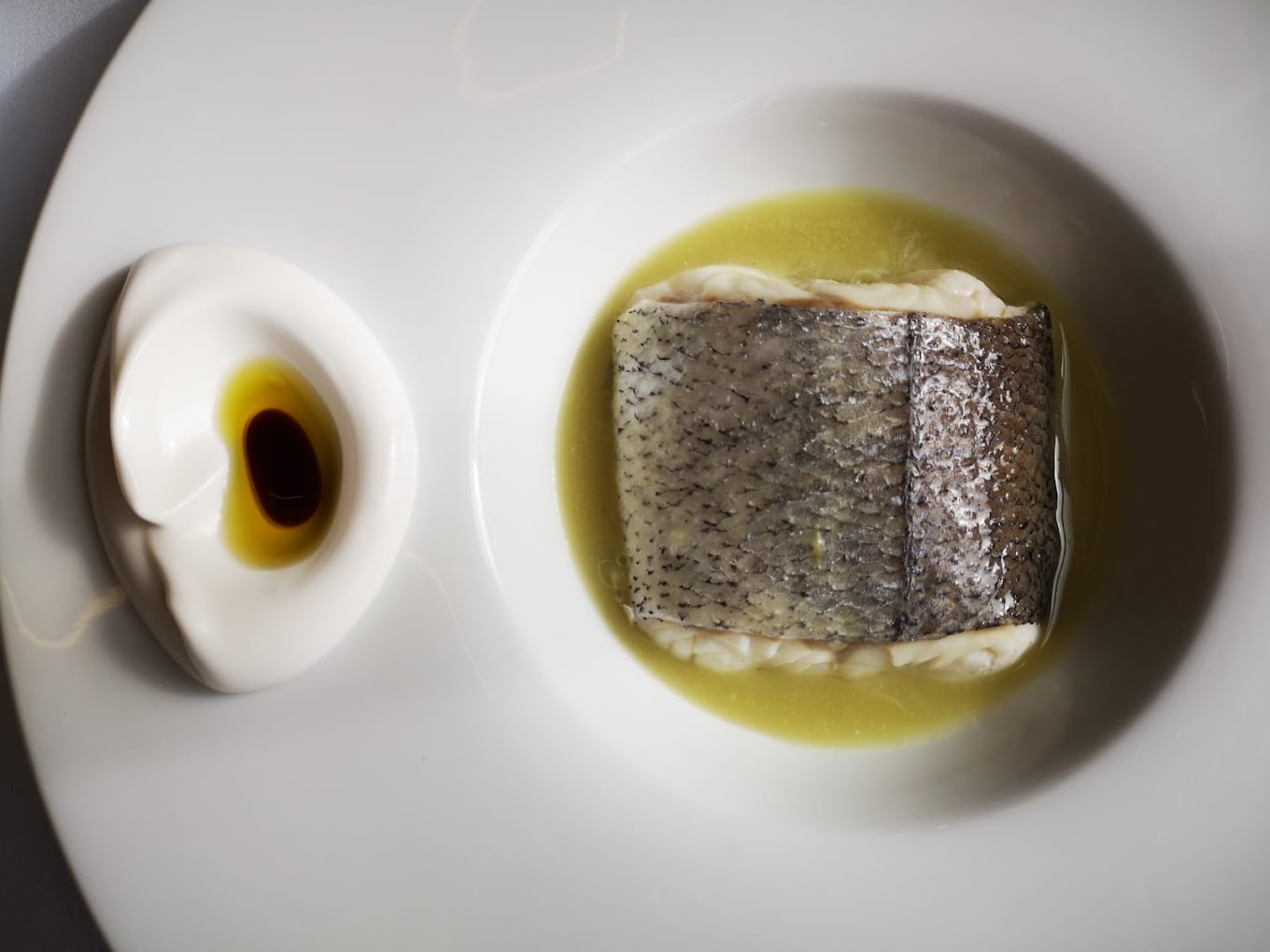
Pulpería Melide: Specialized in octopus á feira in A Coruña.
Maruja Limón, in Vigo. Run by chef Rafa Centeno. This restaurant offers a creative and tasty cuisine that stands out for its use of local and seasonal products.
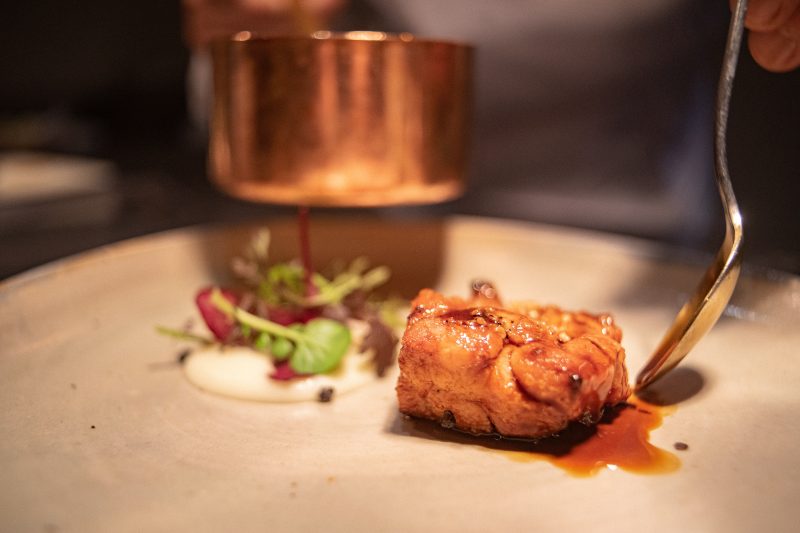
Casa Marco: in Vigo. With a long family tradition, this restaurant is known for its homemade Galician cuisine, with dishes such as lacón con grelos and pulpo a la gallega.
Pepe Vieira Camiño da Serpe: This Michelin-starred restaurant in Pontevedra offers a unique dining experience that combines modern techniques with local produce.
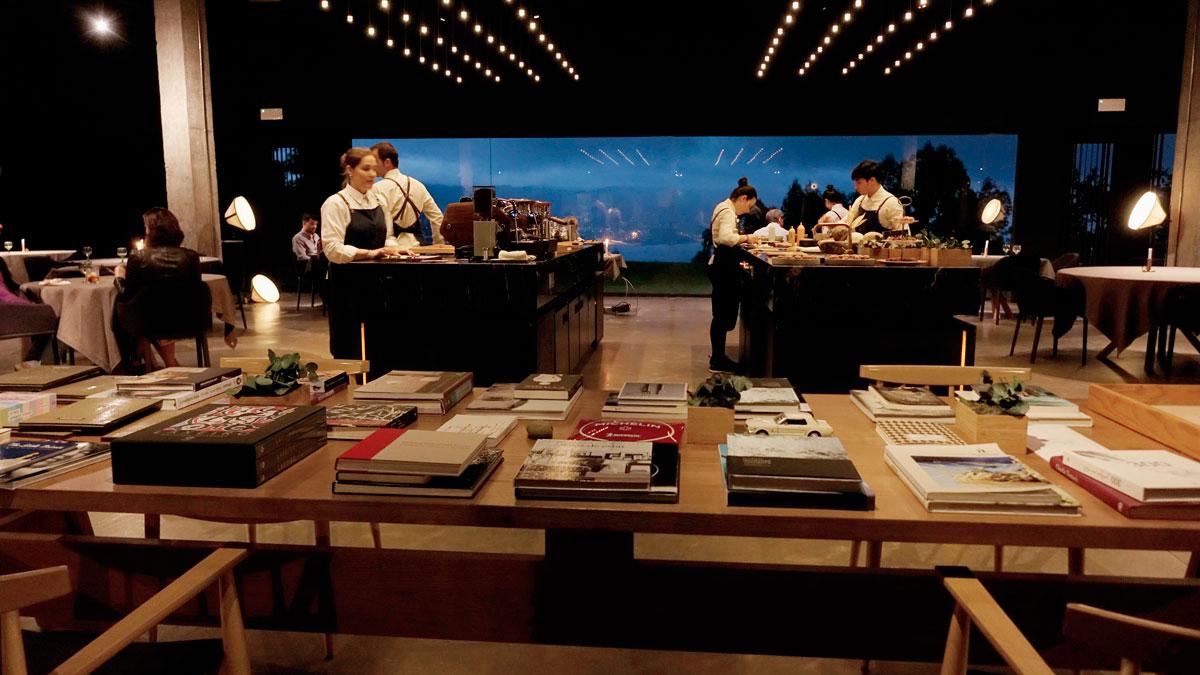
Taberna da Anxelina: A popular place among Pontevedra’s locals, this tavern offers traditional Galician dishes with a homemade touch and affordable prices.
Culler de Pau. With two Michelin stars, this restaurant is known for its innovative cuisine and focus on local Galician produce.
A Taberna do Trasno: Located in the old town of Ourense, this cozy restaurant offers a wide selection of traditional Galician dishes with a creative twist.
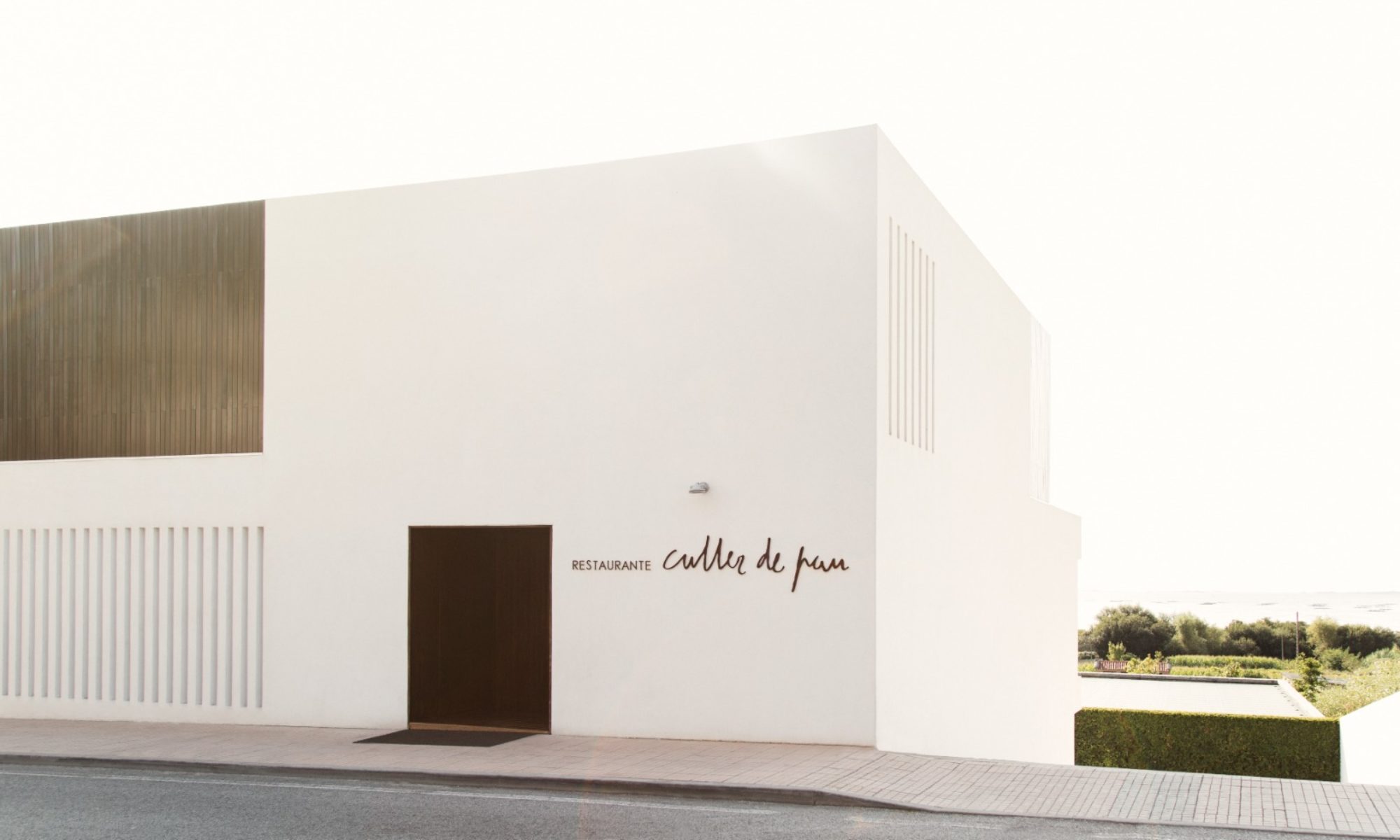
Where to sleep
If you love surfing, we recommend this house full of details that will make a home during your stay. In the middle of a typical Galician village, with a large garden from which you can enjoy incredible views of the sea and the characteristic lagoon, as well as ample space to relax surrounded by nature.

We recommend this contemporary cabin with flavors of the sea. On the beach of Doñinos, the most famous beach of Ferrol. Its interiors dialogue with the outside through large windows, from where to enjoy an idyllic setting and an atmosphere that invites you to feel at peace. Perfect for families looking to escape and connect with nature.
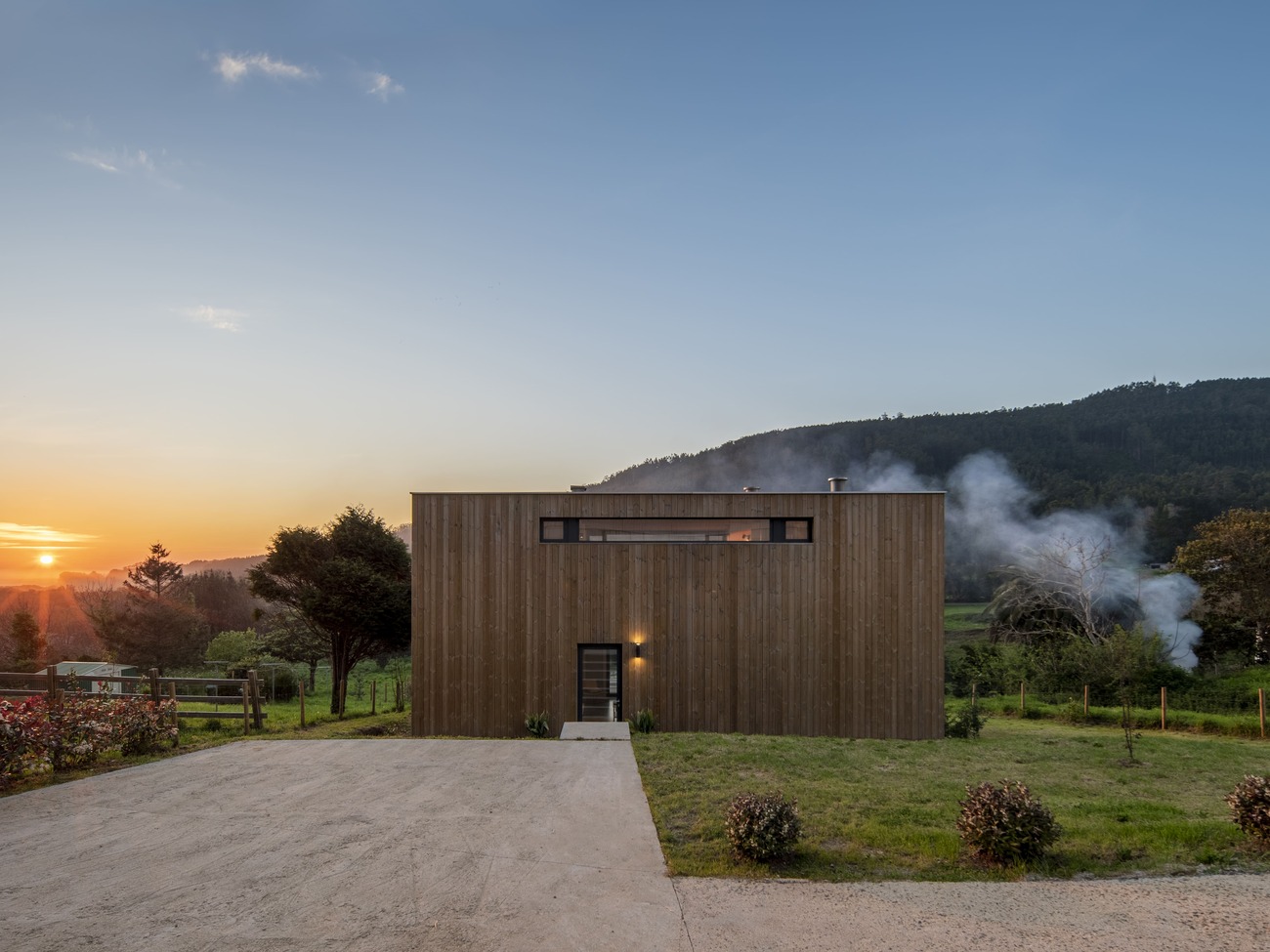
Nestled in the Ulla valley, between mountains and vineyards. Typical Galician farming village surrounded by nature. With sustainable, autochthonous and recycled materials. To enjoy its inspiring natural landscapes around the Ulla river. A treat for the senses.
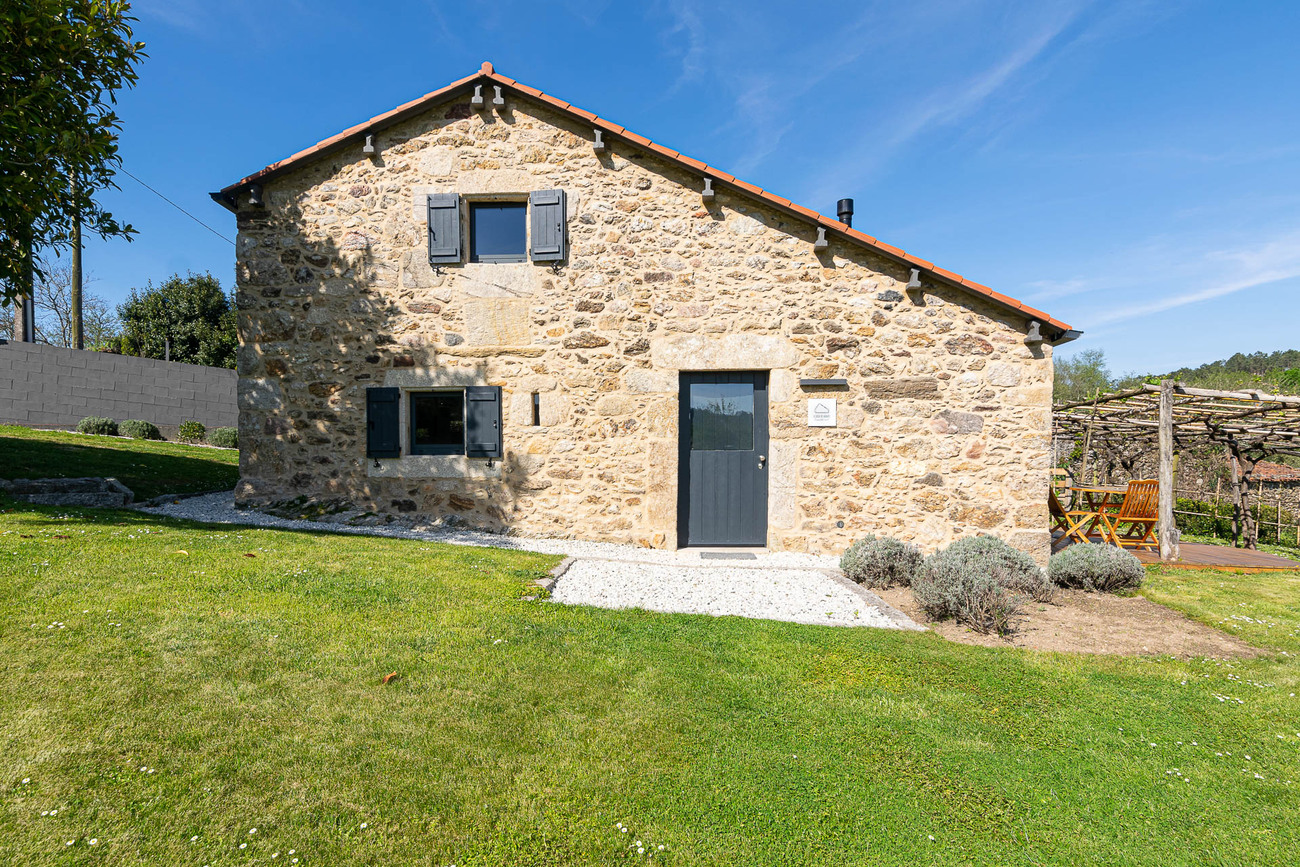
In this land of contrasts, every corner is a treasure to be discovered, where nature overflows with beauty and gastronomy is a festival of flavors. Galicia invites you to live a unique experience, Galicia calidade.

Cantabria has it all. Don't hesitate, plan your trip to enjoy all the wonders this region has to offer. Experience a mild summer away from the extreme heat. You won't want to leave.